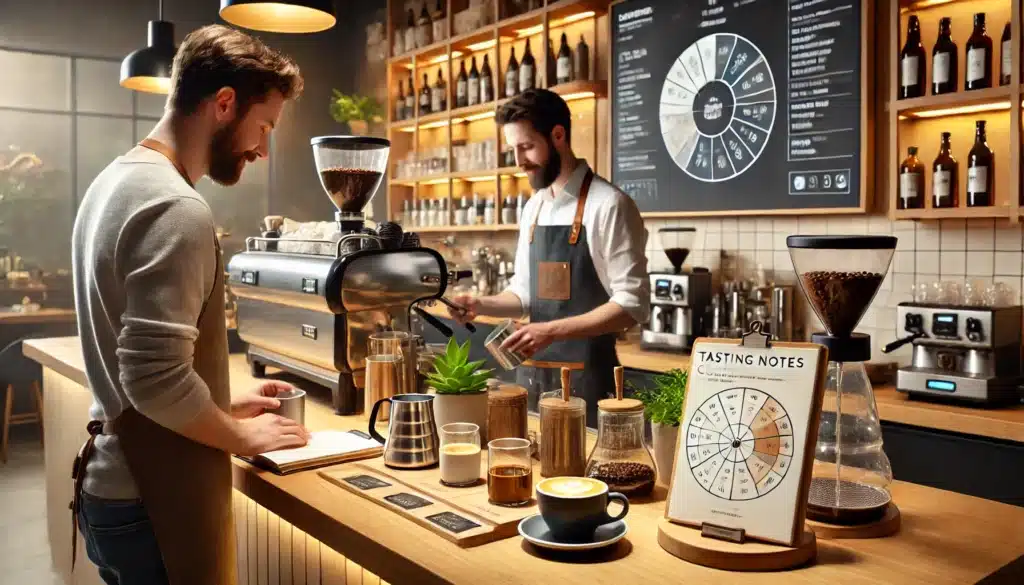Behind every great cup of coffee, there’s often a great barista. More than just someone who makes drinks, a skilled barista is a sensory guide — someone who brings out the best in coffee and helps others experience it fully.
In this article, we explore the essential role baristas play in shaping the flavor, presentation, and emotional impact of every cup they serve.
1. The Barista as a Flavor Translator
Baristas are the final link in the coffee chain, translating the hard work of producers, roasters, and processors into a sensory experience.
Their choices — from grind size to extraction time — determine how:
- Acidity shines
- Sweetness balances
- Aromas express themselves
A barista’s precision ensures that a coffee’s true character is revealed.
2. Mastering Brewing Variables
Great baristas understand and adjust key variables:
- Grind size
- Water temperature
- Brew ratio (coffee to water)
- Time and turbulence (agitation)
Small adjustments can dramatically shift a coffee’s taste. This is where science meets intuition.
3. Crafting Espresso with Care
Espresso is a demanding method. A barista must dial in:
- Dose and yield
- Pressure and flow rate
- Shot time and temperature
The goal? A balanced shot with body, sweetness, and clarity — all in 25 to 30 seconds.
4. The Importance of Milk Texturing
For milk-based drinks, milk isn’t just filler — it’s a flavor and texture enhancer.
Baristas learn to:
- Steam milk to ideal temperatures (55–65°C / 130–150°F)
- Create microfoam that integrates seamlessly with espresso
- Pour with precision for latte art and even distribution
Milk enhances sweetness, reduces bitterness, and creates smooth mouthfeel.
5. Calibrating the Sensory Experience
Baristas regularly taste their coffee to:
- Detect flavor clarity or muddiness
- Adjust for roast freshness
- Respond to changes in grind or environment
Calibration ensures consistency and quality — from the first cup of the day to the last.
6. Creating a Multi-Sensory Moment
The barista sets the stage for how coffee is perceived through:
- Aroma release (via brewing method and cup shape)
- Visual presentation (latte art, glassware, cleanliness)
- Sound and ambiance (the rhythm of the café)
All senses contribute to how a drink is experienced.
7. Educating the Consumer
A good barista doesn’t just serve — they share knowledge.
- Explaining flavor notes
- Offering brew method suggestions
- Guiding customers through tasting experiences
They help demystify specialty coffee and make it more accessible.
8. Hospitality and Emotion
The barista’s role extends beyond technique — it includes welcoming, warmth, and attention.
- Remembering a guest’s name or order
- Sharing the story behind a coffee
- Creating a moment of calm or joy
This emotional connection enhances the sensory experience in powerful ways.
9. Adapting to Context
Great baristas adapt based on:
- Customer preferences
- Time of day
- Café environment
- Brew bar vs. high-volume service
Their versatility ensures each cup is appropriate and enjoyable for the situation.
10. The Barista as a Coffee Artist
In the end, a skilled barista is a blend of:
- Scientist — managing variables
- Chef — balancing flavor
- Host — offering warmth
- Storyteller — connecting coffee to culture and people
They turn coffee from a product into an experience — one cup at a time.
Final Thoughts: Behind Every Great Cup
The barista is the human face of coffee — the one who turns precision into pleasure and intention into taste. Their role is vital, not just in how coffee is brewed, but in how it’s experienced, remembered, and loved.
Next time you enjoy an exceptional cup, take a moment to appreciate the hands and heart behind it.







